Camera Placement Guide
Use your existing camera to integrate with VisionAI platform
Proper camera placement is essential to ensure that all areas of the workplace are adequately covered.
General guiudelines
When positioning cameras for various use situations, take into account the following general guidelines:
- Lighting: Install cameras underneath a light fittings so that they do not obscure the cameras.
- Backlighting: Avoid mounting cameras near to window or other areas to protect from backlighting issue. It affects image quality.
- Local policies: Take into account local placement policies and laws.
- Authorization: The installation of cameras should be authorized by a designated person or department within the organization.
- Maintenance: Cameras should be regularly maintained and checked to ensure they are functioning properly. The policy should specify who is responsible for maintaining the cameras and how often they should be checked.
Note
Overall, it's important to develop local policies for camera mounting that balance the need for surveillance with the protection of privacy rights. The policies should be reviewed and updated regularly to ensure they remain relevant and effective.
Key factors
When setting up cameras there are three key factors to consider:
- Camera height
- Camera-to-focal-point distance, and
- Camera angle relative to the floor plane.
It's crucial to identify the direction in which the majority of people are walking in relation to the camera's field of view. This direction is important for optimal system performance.

Camera height
Camera height is an important consideration when determining the field of view for workplace safety cameras. For example, cameras should be placed high enough to capture the entire area of interest, but not so high that the camera view becomes distorted or difficult to interpret. Additionally, the height of the camera should take into account any obstacles or obstructions that may block the camera's field of view.
Camera-to-focal-point distance
The camera-to-focal-point distance is the distance between the camera lens and the focal point of the area being monitored. This distance is important because it determines the level of detail captured by the camera. If the camera is too far away from the focal point, the resulting image may lack the necessary detail to accurately capture safety hazards or other important information.

This distance is measured on the floor plane.
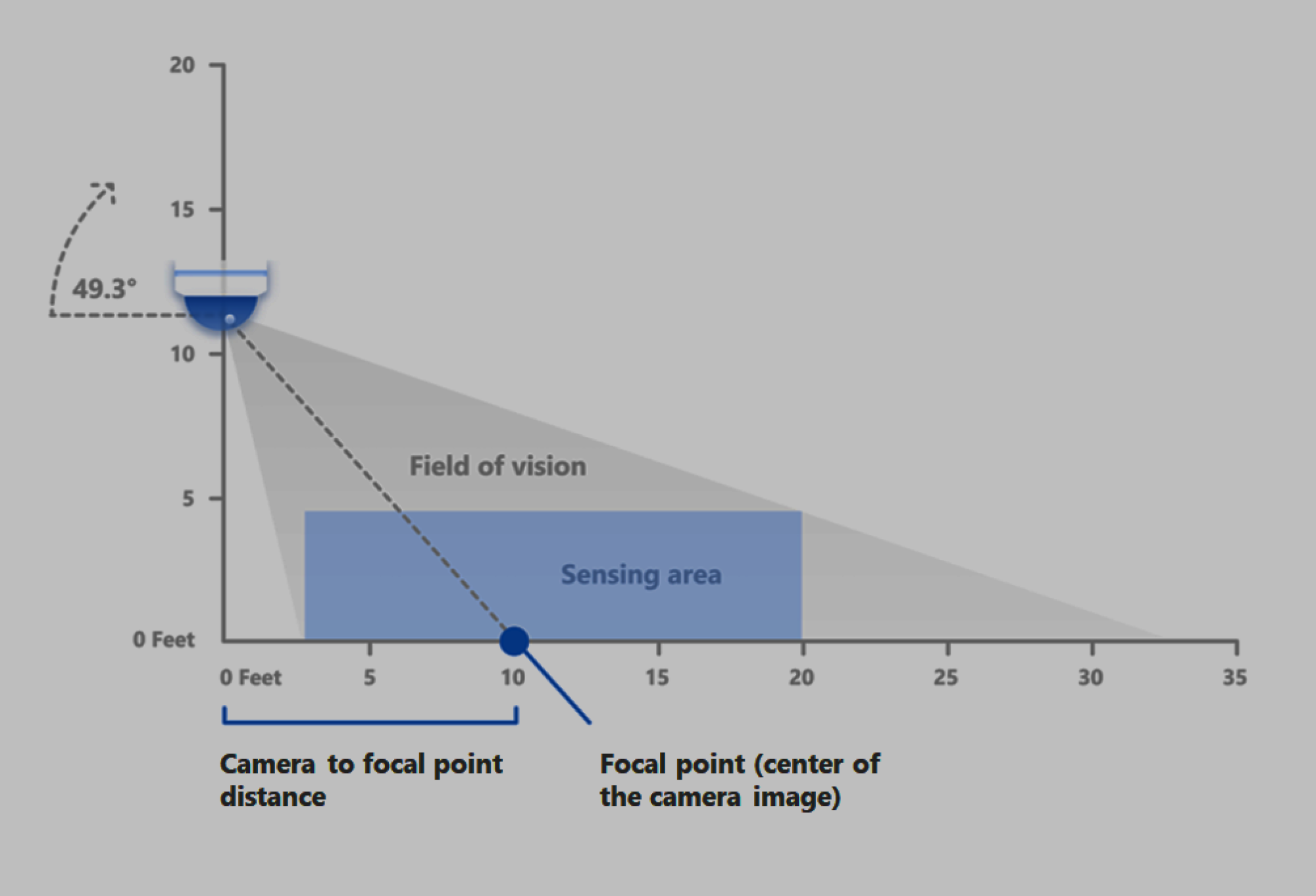
From above, it looks like this:
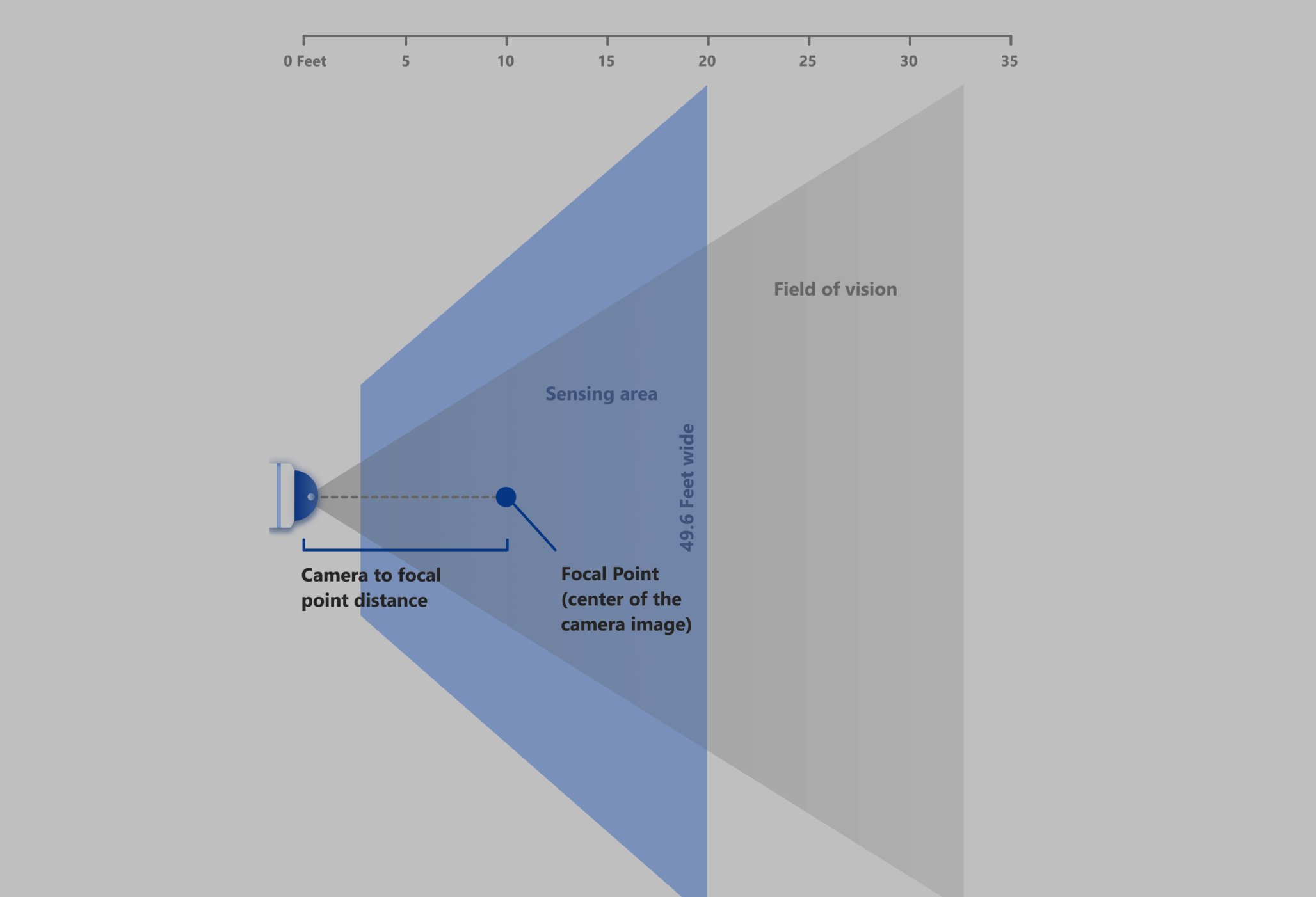
The following illustration simulates camera views from the closest and farthest camera-to-focal-point distances.
| Closest | Farthest |
|---|---|
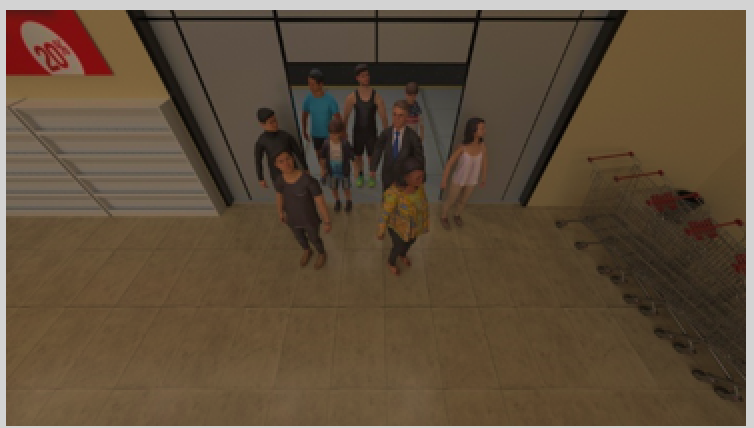 |
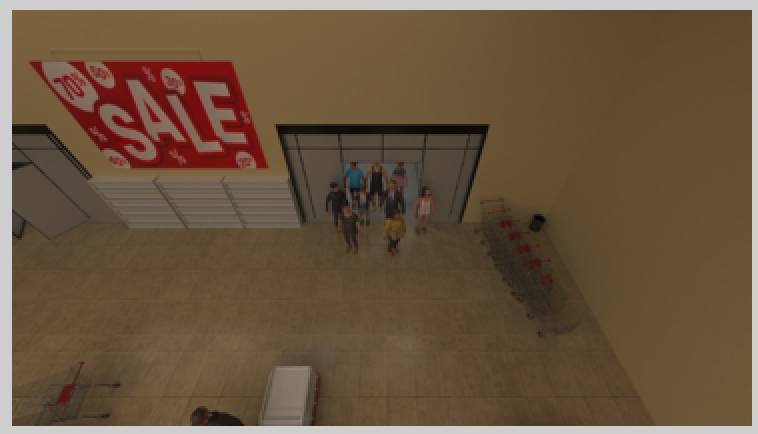 |
Camera angle mounting ranges
The angle of the camera relative to the floor plane is important for capturing accurate footage of safety hazards and other workplace activities. For example, cameras should be positioned to capture a wide field of view, but not at such an extreme angle that the resulting image becomes distorted or difficult to interpret. Additionally, the angle of the camera should take into account the direction that people are walking in relation to the camera field of view, as this can impact the performance of the system.
The following illustration simulates camera views using the leftmost (-) and rightmost (+) mounting angle recommendations:
| Leftmost view | Rightmost view |
|---|---|
 |
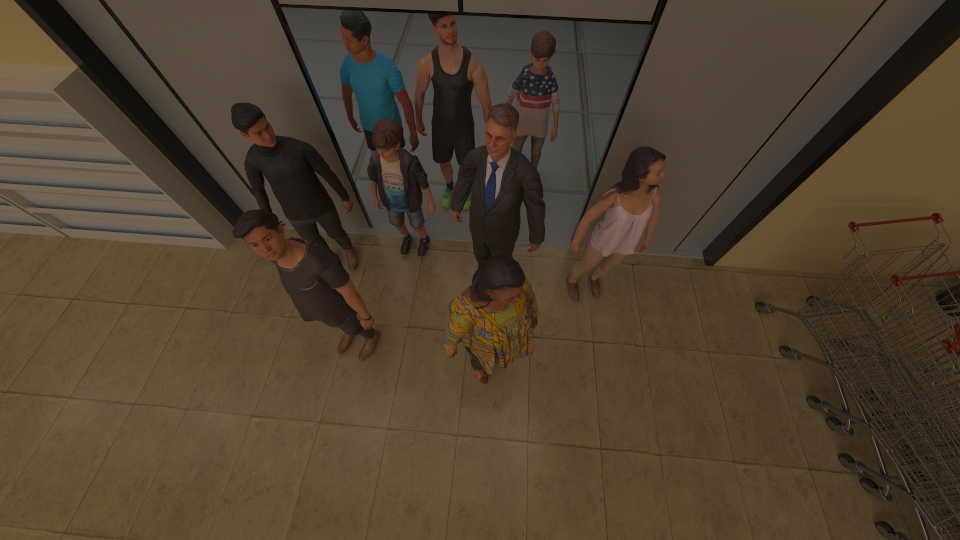 |
The following illustration shows camera placement and mounting angles from a birds-eye view.

It's important to carefully consider camera height, camera-to-focal-point distance, and camera angle relative to the floor plane. Taking these factors into account can help ensure that cameras are positioned to capture accurate footage of workplace hazards and other important safety information.
Camera View
The camera view refers to the field of vision captured by a camera. The camera view is determined by the placement of the camera and its angle of view.
There are two primary modes of camera placement that are considered for VisionAI workplace safety scenarios:
- Ceiling-mounted and
- Straight-mounted.
Ceiling-mounted cameras
- Ceiling-mounted cameras are typically installed on the ceiling or high up on a wall and are pointed downwards. They provide a wide-angle view of the area below.
- These cameras are ideal for monitoring larger areas, such as open workspaces, warehouses, or production floors, where a bird's eye view is necessary to capture all activities in the space.
- These cameras can also be used in areas where there are obstructions that would block the view of a straight-mounted camera.
-
These cameras can cover larger areas with fewer cameras, making them cost-effective and efficient.
The following illustration provides simulations for the camera ceiling views.
Example 1 Example 2 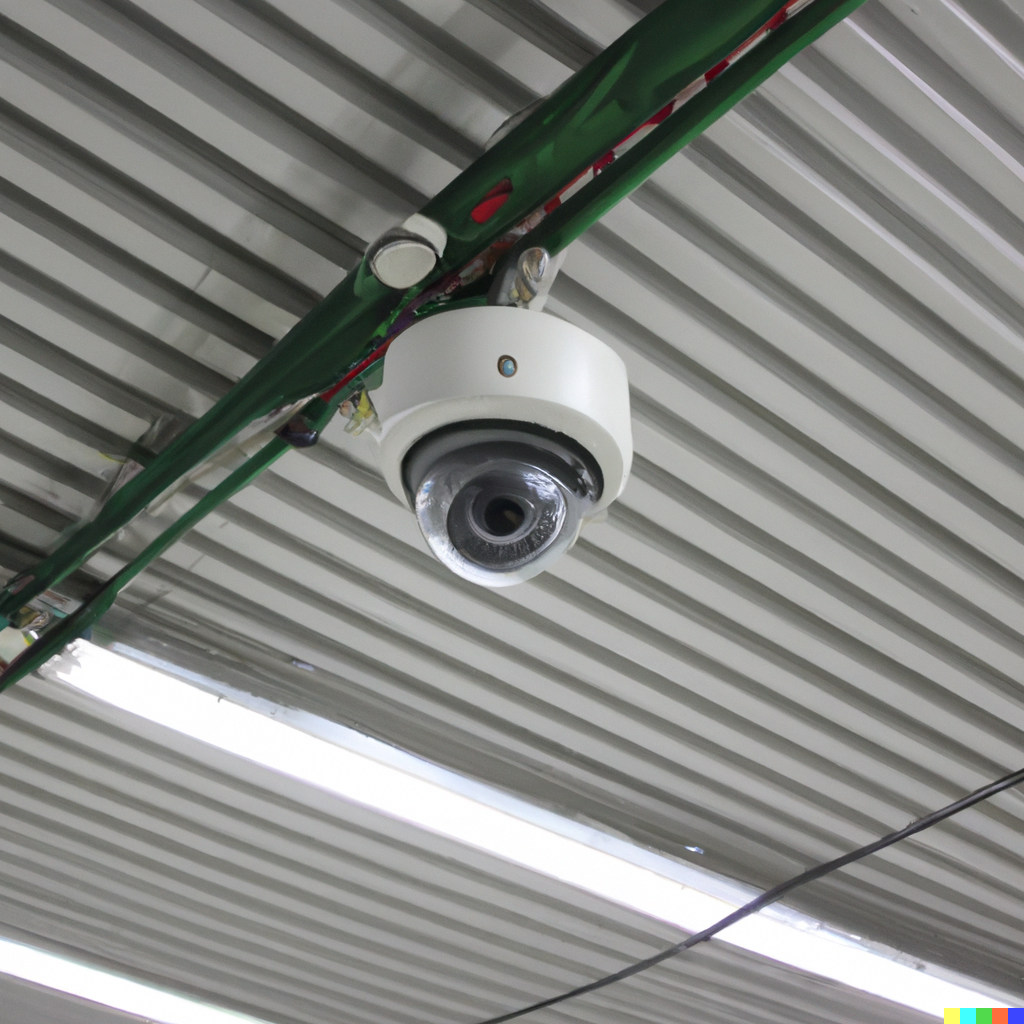

Straight-mounted cameras
- Straight-mounted cameras are mounted at eye level or lower on a wall or a stand and are pointed straight ahead. They provide more focused view of the area in front of them.
- These cameras are ideal for monitoring smaller areas, such as corridors, entrances and exits, where a more focused view is required for capturing specific activities.
- These cameras are also useful for capturing facial features and other details as they are closer to the subject being monitored.
-
One of the advantages of straight-mounted cameras is that they are often easier to install and adjust, and they allow for more detailed and accurate identification of individuals.
The following illustration provides simulations for the camera front views.
Example 1 Example 2 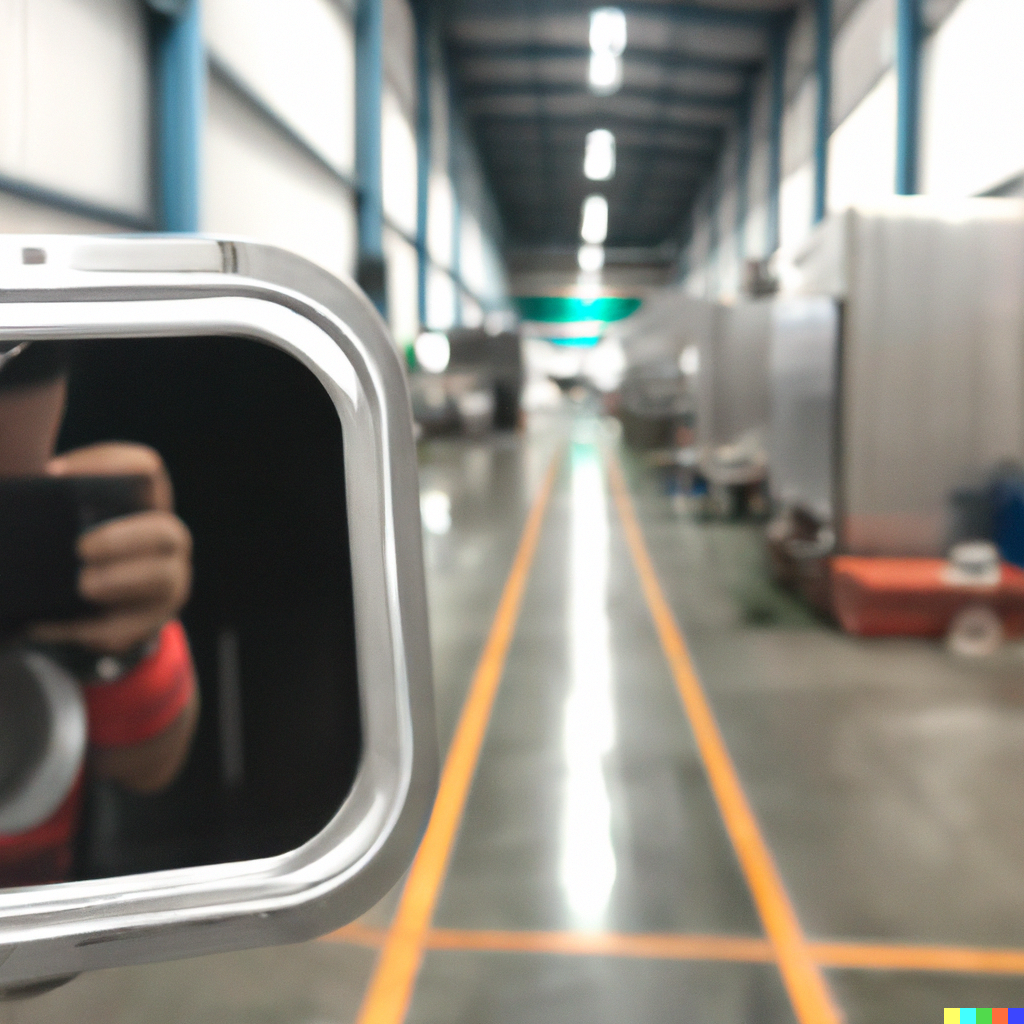

When determining which mode of camera placement to use, it's important to consider the specific needs of required use case. Factors such as the size of the area to be monitored, the level of detail required, and the presence of obstructions should all be taken into account to ensure that the cameras are installed in the most effective and efficient manner possible.
Next Steps
Contact Information
contact_phone Sales Inquiries
Get in touch with our sales team for demos and pricing information.
- Email: sales@visionify.ai
- Phone: +1 720-449-1124
support_agent Technical Support
Need help? Visit our support portal or contact our technical team.
calendar_month Schedule a Demo
See VisionAI in action with a personalized demo from our team.